#Iron Crown Enterprises
Text

BALIN SON OF FUNDIN
LORD OF MORIA
(Liz Danforth, Moria, Middle Earth Citadel supplement for MERP, Rolemaster, and the Lord of the Rings Adventure Game, Iron Crown Enterprises, 2nd ed, 1994)
#Moria#Liz Danforth#LotR#MERP#Tolkien#JRR Tolkien#Gandalf#The Fellowship#Balin's Tomb#The Lord of the Rings#The Fellowship of the Ring#Middle earth Role Playing#Chamber of Mazarbul#Book of Mazarbul#Chamber of Records#Rolemaster#ICE#Iron Crown Enterprises#Middle earth#Middle-earth#Middle-earth Role Playing#Khazad-dûm#Lord of the Rings Adventure Game#1990s#tomb#MERP Moria
269 notes
·
View notes
Text
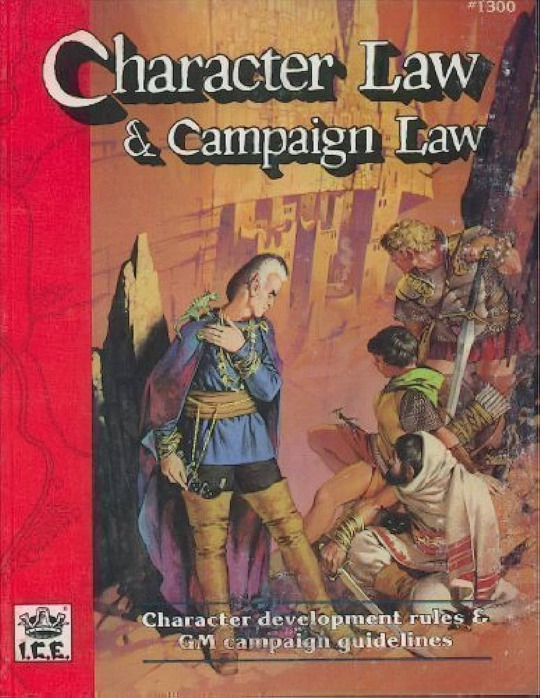



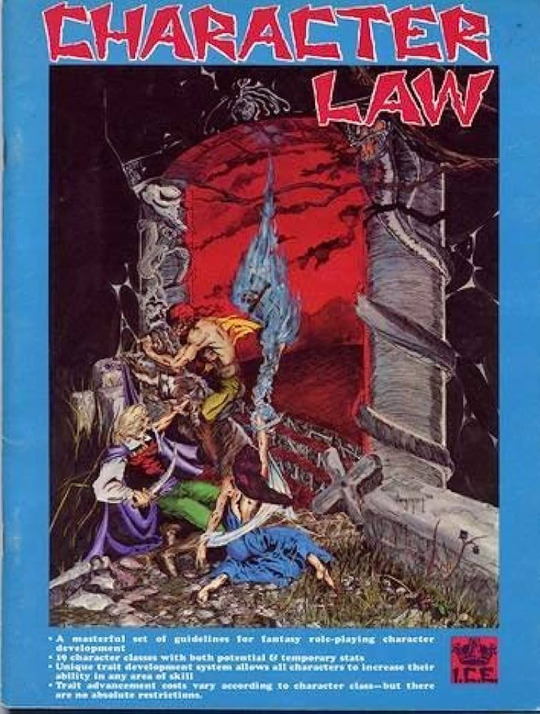


#RPGCovers Week Ten
Rolemaster series (1985 on)
Angus McBride
In my youth, there was a cohort of players about five years older than me, some of them part of my sister’s crew and others just among the rabble at the game shop. There was a certain kind of “elitism” to what folks played. When Champions came along, Villains & Vigilantes became passe for example. Rolemaster, in its original incarnation of heavy stock parchment booklets and glossy magazine-style supplements, was one of those. It was the fantasy rpg the cool, older kids played.
And throughout high school it was what I gravitated towards, giving up on AD&D entirely for the more rarified air of RM (ironically paired with Harn, but that’s another story). Rolemaster at that point was a weird set of printings and editions, a mess which looked incoherent and made it hard to tell folks exactly what they actually needed to buy.
Then in 1985 Iron Crown Enterprises consolidated everything into a set of books with a standard cover design and unified art. These became the standard for years (if you ignore the layout and design of the weird Rolemaster Companions). What really pull them together, beyond the book design, was McBride.
Angus McBride had already been doing Middle Earth RPG covers for years. They were all great. Before that he’d been an illustrator for various Osprey Men-at-Arms series, bridging that gap between wargaming grognards and role-players. These RM were great because we got to see repeating, iconic characters– kind of a first I think. I don’t know that we’d had other games with recurring figures and an implied story.
The first three books: Character Law & Campaign Law, Arms Law & Claw Law, and Spell Law used them effectively. Plus you could now buy a box that had all of them bundled together. Ten years later, ICE would reuse these images with a new cover design for their Rolemaster Standard System, with a few new books with new illustrations by McBride that sort of fit in with the existing story and sort of didn’t make any sense (see Creatures & Monsters). But as Rolemaster began to crash and go through multiple editions and changes, they lost control of their cover designs, leading to an absolute chaos that, ironically, felt more like first edition’s mess.
65 notes
·
View notes
Text

"Curran" by Laura Sava.
7 notes
·
View notes
Text
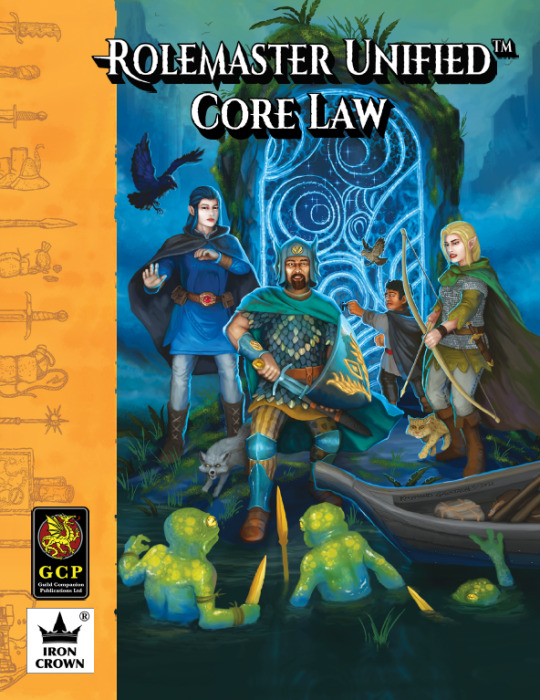
Rolemaster Core Law - RPG rules PDF on DriveThruRPG
(link to product description page above - affiliated)
3 notes
·
View notes
Text
New Release
Oriental Companion
Iron Crown Enterprises
Oriental Companion is your guide to using Rolemaster for the land of the Orient; an adventurous world with Samurai and Ninja. Rolemaster's Orient is a hybridization of many Far Eastern cultures injected with a mix of fantasy and wonder. This book contains new Rolemaster professions, skills, powers, creatures, and items for the Orient, plus plenty more.
0 notes
Text
The Big Damn Rolemaster Megapost
Since I post a lot about Rolemaster (the number one RPG for insane people) and not everyone has seen my Rolemaster posts I end up answering a lot of the same questions: what is Rolemaster? Where do I get one? What are the differences between the different versions of Rolemaster? What the fuck is up with that dang turtle? So I decided that I'm going to collect them all into one single post. Or more like a big post of posts.
First of all, a brief history lesson, or What even is a Rolemaster?
Rolemaster is a fantasy RPG first released in the early 1980s by Iron Crown Enterprises as a series of booklets called Arms Law, Claw Law, Spell Law, and Character Law. They claimed to be system neutral rules for fantasy role-playing games and they had their origin as a set of house rules its creators made for their home game of D&D set in Middle-earth. The story goes that the group was frustrated with the myriad abstractions built into D&D's combat system and they wished for something more realistic. What they ended up building is the funniest RPG ever made.
Rolemaster prides itself on being realistic and detailed and eschewing abstraction in favor of simulation. While in D&D both armor and dodging make you harder to hit, in Rolemaster armor makes you easier to hit as it limits your movements but reduces damage on a hit. When you do get hit you often suffer consequences beyond just the loss of hit points (called Concussion Hits in earlier editions) in the form of critical injuries which come in five different severities and a wide variety of types, including slashing, piercing, crushing, and a plethora of elemental and other types of damage. This same principle carries itself into other parts of the system: maneuvers (the game's terminology for ability and skill checks) have various degrees of success built into them, and so too for spell-casting.
To this end, Rolemaster utilizes a bunch of tables. And the tables are really why we're here.
You see, for all its pretensions about being a realistic hard simulation, the various tables you will end up using throughout a game of Rolemaster are absolutely buck wild and full of the goofiest shit you will ever find. A fumbled attack roll will cause the attacker to stumble over an imaginary, invisibile, deceased turtle. A divine spell will kill an enemy on the spot by filling their lungs with holy water. A character might do gymnastics so good it'll end up stunning their enemies or inspiring their companions.
Rolemaster is very much a stupid comedy game wearing the skin of a realistic fantasy RPG.
89 notes
·
View notes
Photo
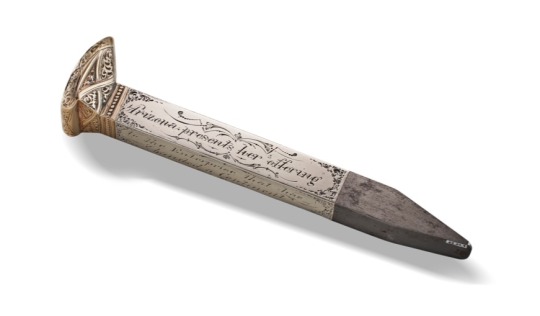
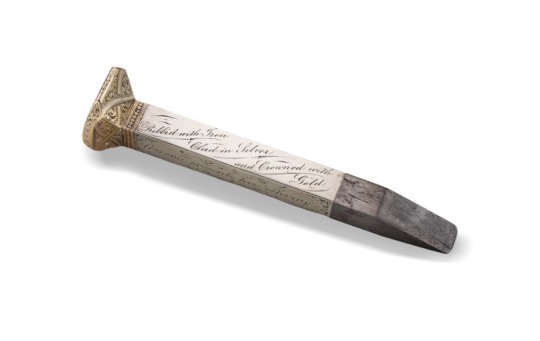


A STEEL RAILROAD SPIKE CLAD IN GOLD AND SILVER USED IN THE CEREMONY MARKING THE COMPLETION OF THE TRANSCONTINENTAL RAILROAD, 10 MAY 1869
Unknown, but possibly G.W. Laird, San Francisco, 1869
Driving the last spike. The Arizona Spike—presented at the ceremony marking the completion of the Transcontinental Railroad. Commissioned and presented by Arizona Territorial Governor Anson P.K. Safford, this was one of four ceremonial spikes used to mark the "meeting of the rails" at Promontory Point, Utah on 10 May 1869. Inscribed on the shaft: "Ribbed with iron, clad in silver and crowned with gold Arizona presents her offering to the enterprise that has banded a continent, dictated a pathway to commerce. Presented by Governor Safford."
135mm (long); 25 x 20mm (head); 11 x 11mm (shaft).
#Railroad Spike 1869#The Transcontinental Railroad#The Arizona Spike#Ceremonial Spike#Meeting of the Rails#Governor Anson P.K. Safford#steel#gold and silver#history#history news#railroad history
268 notes
·
View notes
Text


Swyvers is a light-weight set of rules married to a full set of tools and tables for running a game in the chaotic sprawl of The Smoke, its many districts and The Midden. What a city it is — corrupt officials, looming war, rogue sorcerors, monsters below and nobs above. Violence rests as thick as the smog, nothing is sacred and it’s always bloody raining.
Swyvers is a game about bastards. You and your gang of criminals scarper through heists and sewers, stalk through the filth of The Smoke and, if you’re lucky, you’ll make it out with a few extra shillings. The whole of this city is your filthy, sickly oyster.

Player characters are not heroes, they are not saving the world, they are trying to dodge the gallows in as much comfort as they can while giving the two fingered salute to the Crown. But hey, robbing the rich never hurt anyone, right?
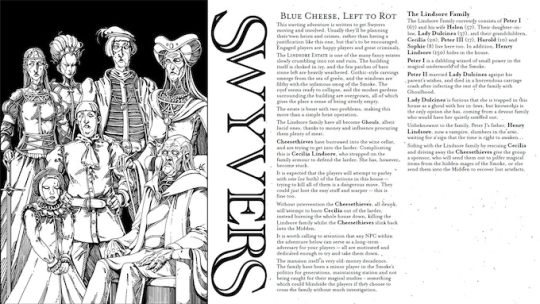

This 'n That
Rules and lists of all the tools, weapons, lodgings, dodgy business investments, and hired goons any self-respecting Swyver should be familiar with.
Rules for dogs of all cut and calibre.
Death and dismemberment!
How to have a proper funeral for your mates.
'Orrible diseases.
Bloodsucking aristocrats.
Accurate time keeping records.
How to spend your spoils on carousing for XP.
Getting into deep trouble for your wild nights out, including gambling debts, dogfighting, and jealous lovers.
Take on apprentice Swyvers (Putterers), lead them on heists, and train them to take your place in the event of your inevitable sticky end.
Fences: who they are and how they'll profit from your terrible life choices.
Rules for bribes, leverage and blackmail!
A system for attracting the attention of Knotland Yard, who will, over many sessions, form a case against you and put a stop to your wicked ways.
A complete selection of terrible adversaries including agents of the church, ghouls, hussars, vampires, average humans, and bears.
... and complete rules on generating your own city of 'The Smoke'
The Smoke is the greatest city in the world, the beating heart of an empire. It is filthy and sprawling like a burst pustule left open to weep besides the iron-grey sea. It does have a name, but only the nobs and learned-readers know it.
Beneath slumbers The Midden – the interconnected passages of built-over streets, basements, tombs and hidden lairs where criminals lurk, beasts squat and lost wealth resides. An enterprising fellow with a sledgehammer can traverse in any direction they
please – not that they’ll like what they find. It is rife with corpse-thieves, cellar-breakers and enterprising businessmen shunned in sunlit places.
The rich of The Smoke honour their dead with elaborate crypts, whose morose edifices encroach ever further into the slums – the trap-smiths of The Smoke do fine business from their craft, and the fences keep the money flowing thanks to enterprising tomb robbers.
Every group of Swyvers will have their very own Smoke. The GM starts a campaign by generating the city, starting from a core of districts: the Royal Gaol, the Palace, the Mayoral District and the Docks. From there they follow along Swyvers' generation tables to flesh out and, potentially, endlessly expand their rotten city.
You will have a unique engine for running your own Swyvers games!
... and a unique and innovative magic system
Magic is not a known factor to the vast majority of the denizen of The Smoke. Rumours of witches abound, but specifics are thin on the ground.
To cast a spell, put briefly — the caster plays blackjack.
... and a starting adventure!
A starting adventure is included to get Swyvers moving and involved. Usually they’ll be planning their own heists and crimes, rather than having a justification like this one. Engaged players are happy players and great criminals.
In Blue Cheese, Left to Rot the party rob the Lindsore Estate, uncover their ivy-choked secrets, liberate their ancestral valuables, and maybe solve a few problems and make a few friends or enemies along the way.

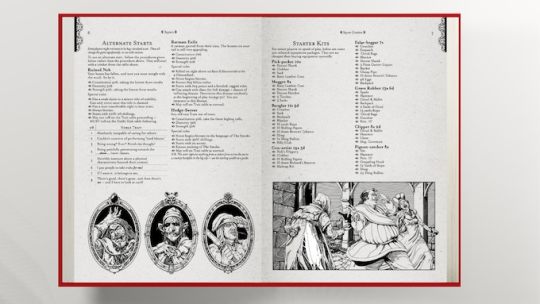
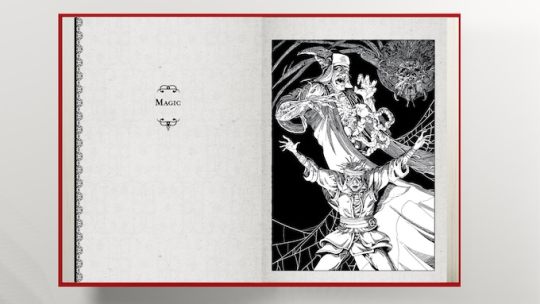
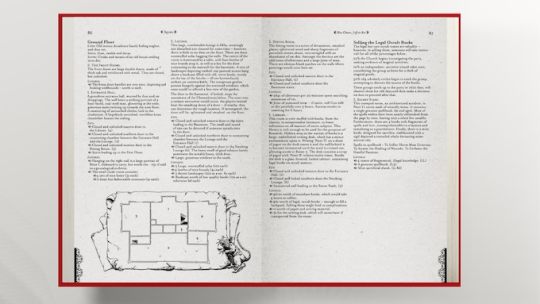


Kickstarter campaign ends: Thu, March 7 2024 6:00 PM UTC +00:00
Website: [Melsonian Arts Council] [facebook] [twitter] [instagram]
19 notes
·
View notes
Text

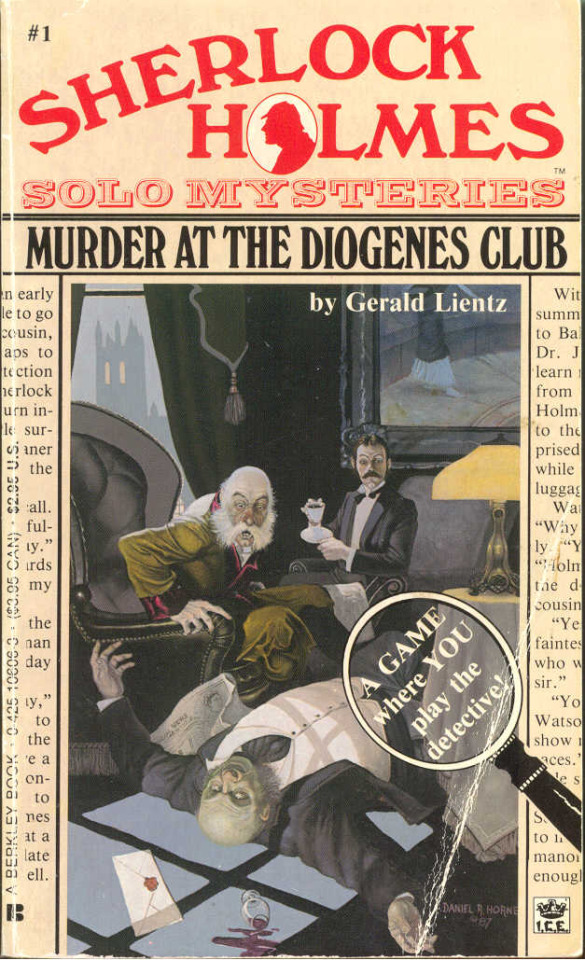
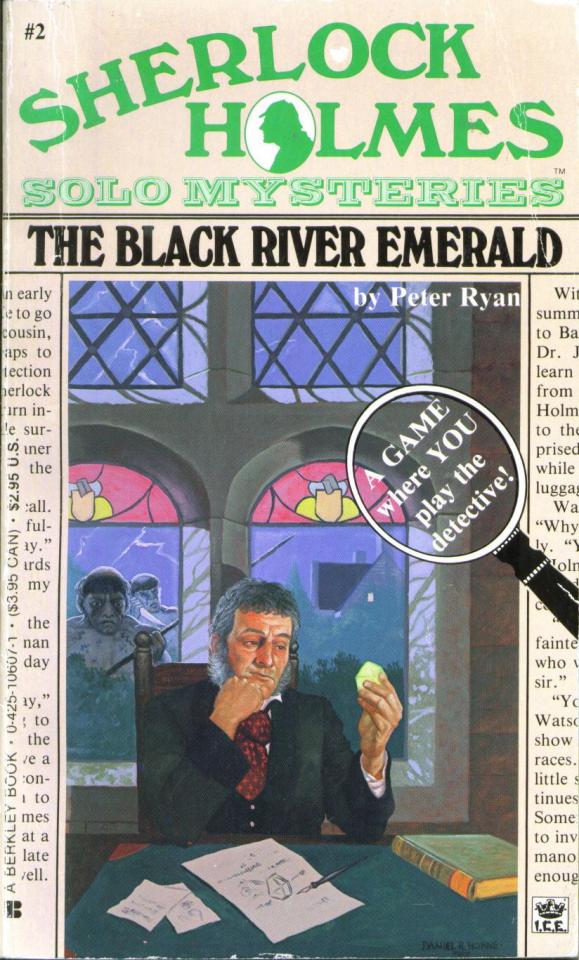



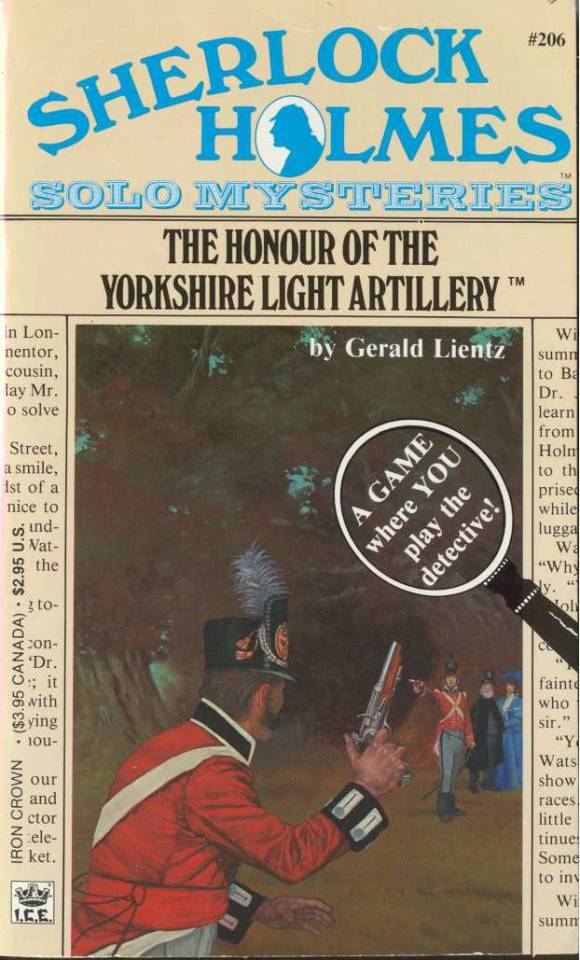

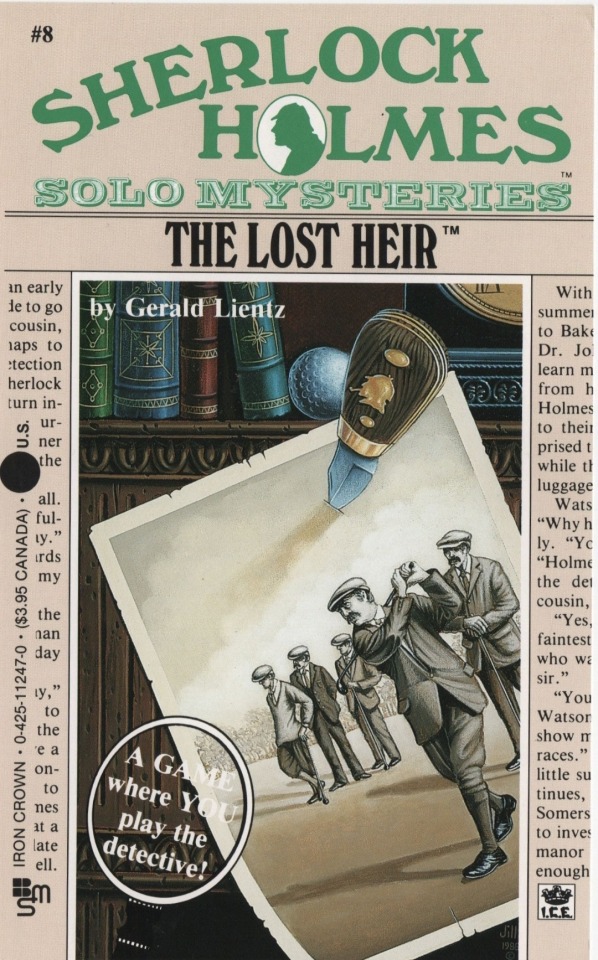
"Sherlock Holmes Solo Mysteries" gamebook series by Iron Crown Enterprises (1987-1988, published by Berkley and I.C.E.)
#its kind of a ttrpg but more of a choose your adventure with dice rolls#all available on the internet archive#except for the ninth book that may or may not exist because ive found it listed only in title#sherlock holmes#book cover#sherlock holmes game#merchandise#holmes#sherlock holmes solo mysteries#murder at the Diogenes club#the black river emerald#death at the appledore towers#the crown vs dr watson#the dynamiters#the honour of the yorkshire light artillery#the royal flush#the lost heir#the kidnapping of moriarty#gerald lientz#iron crown#iron crown enterprises#book games#game books#ttrpg#vintage books#vintage ad#berkley#ice publishing
40 notes
·
View notes
Text
Practices of the Faith of the Seven in the Fifth Century, Part I
by Maester Steffon
It is difficult to write of the familiar with the same rigorous detachment as one may write of the foreign, yet for the enterprise of a maester, it is fundamental to understand well that what is written down shall be passed down to generations; and such it is that the future may not preserve our familiarity, and may be aghast with that which we write with such familiar notions, and require guidance in their introduction to our most sacred traditions, that they may one day follow it, too, in greater virtue and intensity than even the ancients could dream of. So it is that I set down my quill, and write of the Faith of the Seven, as it exists in the holdings of the Iron Throne, in this year of 467 since Aegon’s Conquest.
The first and primary precept of the Faith is the belief in the Seven-Who-Are-One, a single deity composed of seven aspects - the Father, the Mother, the Warrior, the Maiden, the Smith, the Crone and the Stranger. This fundamental division, of seven aspects in one single body, is the crux of our iconography and belief - as well as the understanding that each aspect does not exist as an individual, and that the Seven encompass all. Why, the Smith is all that toils, and the Father all who rule and cast doom; the Crone is all the wisdom that may be passed down, and the Stranger all who are cast out and lost. They each have a thousand names, yet in the liturgy, they are referred to as such; and are opposed not by any foreign deity, but that we may rest safe in the confidence that all good and evil are the domain of the Seven, though they may cast upon us challenge and hardship, that even devils serve the divine in intent.
The aspects of the Seven are most often split in two triptychs; the Father, Warrior and Smith, as representative of masculine roles, and the Mother, Maiden and Crone, as representative of feminine roles. Sometimes, however, they are paired up in duos - the Father with the Mother, the Maiden with the Warrior, the Crone with the Smith. In all its iterations, however, one thing remains constant - that the Stranger remains alone and outcast, as a representation of social outsiders, wanderers, ostracism and death.
It is of note that a central aspect of the practice and teachings of the Faith is the understanding of the individual as always centered around aspects, and some maesters of my order have speculated that at one point in the early life of the Andal peoples, there was a meaningful form of a caste split between the different aspects of the Seven. To surrender one’s identity to more fully align themselves with the Seven is noted as a virtue, and very prominent among the High Septons, who cast away their names to live a life dedicated to prayer, and Saints, whose names are stricken from records upon canonization and a title granted befitting their martyrdom. Indeed, all Septons are required to give up their family names to join the Faith, and sign their names away to the books of the Great Sept, and the Silent Sisters, Elder Brothers, Knight Inquisitors, commanders of the Faith Militant and other subgroups of the Faith oft give up their names entirely, or even other forms of personal identification, such as individual possessions, marking clothes, hair and, in more extreme cases, speech.
The Faith of the Seven marks its beginnings in the lands of Andalos, where it is said that the Seven themselves once walked as men - though it bears note that they’re rarely referred to as separate individuals, but as “a single divine in seven forms”, to quote the Seven-Pointed Star. While the text itself does not make a clear distinction as to when, or if, the Seven left the material earth, which has become a theme of much discussion among scholars of theology, it is common folk belief that they’ve joined the stars as their homonymous constellations after the crowning of King Hugor of the Hill. Another popular folk tale notes the position of these stars, and claims that they joined the heavens to guide the Andals in their crossing of the Narrow Sea, and guide them through it.
Whilst the practices of the early faith are shrouded in mystery, what little can be verified is passed down in the writing of the early Andals, who used carved stone to mark their accounts and stories; we've an understanding that the settlement of the seven aspects of the divine were a relatively late development, as we find prayers to several personal ruins to faces that are no longer worshiped, such as the Sailor and the Merchant. The Faith itself argues that these are but other names for the existing faces of the Seven, most prominently the Smith, which “takes the aspect of all forms of toil and labor with which the spirit is enriched”, and is often brought up as perhaps the primary aspect of worship of these early Andals, and often associated with the peoples of the Rhoyne and their metalworking and trade.
It is with the series of migrations to Westeros known as the Andal Invasion, however, that we find much of the basis for the modern practice of the Faith of the Seven; the first Sept across the Narrow Sea, erected at the Fingers, is a structure of seven slabs of stone closed around each other in a henge, the faces of the Seven each painted upon it - since, a larger sept has been built surrounding the structure, in the style of later Arryn period buildings, with white marble walls and fine stained glass windows shining light into the central structure. It's in Westeros that we find evidence for the early organizational structure of the Faith, with tellings of Septons coming across with individual kings and how they each founded their own septries and motherhouses, and how they slowly spread deeper into the continent - at this point, written records begin to survive within the Citadel archives, though they are sparse and often writ in a variation of Old Andalish that is not entirely comprehensible to our modern sensibilities.
The institution of the High Septon in Oldtown, however, is the turning point in terms of the creation of a single liturgy and canon for the practice of the Faith in Westeros; whilst before they directly competed against each other, with Andal king against Andal king, some incorporating the beliefs of the First Men and others adamantly refusing to allow the impurities of heresy into their worship, it was House Hightower's patronage of the Faith centered in their capital, as well as the spread of the maesters and the Citadel as a centralised institution across several kingdoms, that ultimately resulted in the formalization of a single liturgical canon in the form of the modern revisions and translations of the Seven Pointed Star, originally a work passed down by oral tradition with vast regional variation; still, it was a slow process of hegemonic transition into a unified institution of the Faith, as records attest of difficulties in how different septs and lordships understood the rights of the temporal and spiritual, culminating in the final consensus, upheld until the First Baelorite Schism, that it is the local community of faithful which decide the institution of a septon, though a lord has full rights to exile those who prove themselves disloyal, and the High Septon the ability to defrock those who show their devotion to be failing.
Indeed, that status quo of the Faith was upheld for much of its existence; before the reign of King Baelor the Blessed and his subsequent reforms, it was only with the ascent of House Targaryen that the Faith saw significant changes, particularly with its attachment to the legitimacy of House Targaryen after the Faith Militant Revolt and the tradition of the High Septon crowning the King, as set forth by Aegon the Conqueror; indeed, Septon Barth's influence as Hand of the King was so vast that in many ways, during the realm of King Jaehaerys the Faith became an arm of the Crown, a connection that was maintained throughout the reign of Viserys and Aegon II, and shattered with the final results of the Dance of the Dragons.
The understanding of embodiment and sainthood is a fundamental aspect of the Baelorite Reforms and its succeeding movements, in particular the schism succeeding the end of Baratheon rule. King Baelor was a firm believer in the at the time heretical thesis that the Seven still walked the Earth, embodied within the virtuous faithful - it was a cornerstone of his relations with the Church, including the succession of High Septons appointed by his favor and virtue, as he would often compare some of his devout subjects to the Seven themselves. This was later expanded under the rule of Queen Jeyne Baratheon into the doctrine of sainthood, upheld to this day by the Starry Septry primarily, as well as a few others of the temporal institutions; under the thesis of sainthood, a blessed, virtuous few would sacrifice themselves whole in the name of the Seven, and thus abdicate their own identity through martyrdom and become one with the divine - that is to say, “the divine spirit of the Seven-Who-Are-One would replace the physicality of being and undo the individual identity of the self, in favor of a more perfect union with virtue”. The Faith in the North has also found identification with this concept, as Lord Brandon the Pious well established it as a contentious matter of identification among the northern hosts; through syncretism with local practices, the tradition of regnal names, where upon assumption to a lordship a Lord would take a name already blessed as that of a saint and cloth himself in much the same garments as he, became a popular one among the Northmen who hold to the Faith, calling back traditions of the heathen First Men in its practice.
Though such figures are few, the process for canonization is initiated often enough; most often, it is the family of the martyr who requests that the High Septon investigate the miracle of martyrdom, whereupon a knight inquisitor should be granted leave of the land and its people to investigate it. At times, maesters are invited to join the inquiry, as they’re often specialists in the histories which may require to be uncovered to assert the virtue of the deceased, though most often it is the local septons which give testimony as to the beatitudes. Ultimately, if the candidate is canonized, the Faith strikes their name from the record and seeks to erect a septry at the site of their martyrdom, wherein, by custom but not law, the seven faces of the gods are each different depictions of the martyr; and the High Septon travels to the resting place of the deceased, exhuming their body and anointing them with seven oils as though a newborn, marking them by a new name which more perfectly reflects their virtue - the names of men, after all, are base and of the Earth, and to surrender oneself whole to the Faith, a name is the first thing that ought to be dismissed.
The traditional liturgical calendar of the Faith is split in seven months, each marked by one aspect of the Seven; it is then split in seven weeks of seven days for each month, giving a total of 343 days, and one extra week, split along the year, which are usually holidays unaligned to any specific aspect. Though some of the breakaway septries have taken to a secular calendar, the liturgical dates remain consistently lined up with a holy day each seven consecutive days that pass. This “puzzling obsession” with the number Seven is a repeating pattern along the Faith, and is found everywhere, all the more in folk beliefs; seventh children are often seen as lucky, and the seventh year of a summer is seen as the hallmark of the beginning of a particularly cruel winter for many, called the Year of the Stranger. A popular kind of book of prayers are called septologies, in which several lists of seven items are bundled up as curiosities, usually each corresponding to one of the Seven - and with a fitting prayer accompanying it. The pattern of seven is perhaps one of the few tenets of the Faith which remain universal to this day - there are records of attempts to change it, such as the brief enterprise the Harrens took at including the Drowned God as an eighth, and other efforts to focus on the oneness of the Seven undertaken in the early days of the Andals, yet that fundamental thesis, of Seven-Who-Are-One, has remained almost entirely uncontested.
Of the schisms, septologies, and the role of the Faith Militant, as well as modern conceptions of the Doctrine of Exceptionality, we will write more at a later date; yet it must well be said that the Faith which is practiced here is much different from that which is practiced there, and that the God which our ancestors believed in may very well not be the same we worship today - for variety and diversity is perhaps one of the few things that the Faith of the Seven has conserved, despite repeated attempts at further centralization of ecclesiastical authority by King and High Septon alike.
#.txt#provisory au tag#the better asoiaf that exists in my head#the idea of the seven as fundamentally alienating personal identity is so fun to me#and something i really wanna go ham on
26 notes
·
View notes
Photo

The Sea Troll Hold is another classic skull mountain (Ellisa Martin, Blademaster Sourcebook, Iron Crown Enterprises, 1990)
#Blademaster#Ellisa Martin#skull mountain#fantasy#horror#Blademaster Sourcebook#Iron Crown Enterprises#sea cliff#full moon#fortress#brazier#sea troll hold#ICE#sea
514 notes
·
View notes
Text
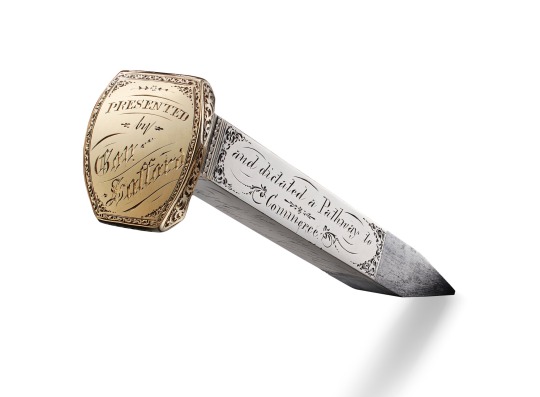

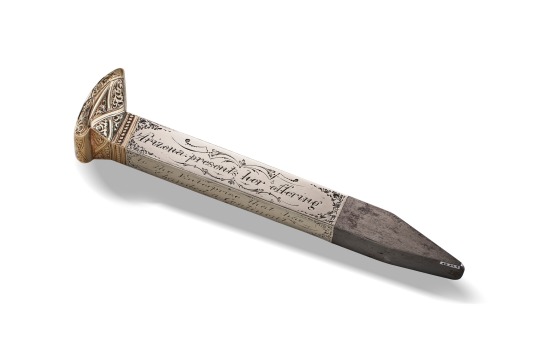

A STEEL RAILROAD SPIKE CLAD IN GOLD AND SILVER USED IN THE CEREMONY MARKING THE COMPLETION OF THE TRANSCONTINENTAL RAILROAD, 10 MAY 1869
Unknown, but possibly G.W. Laird, San Francisco, 1869
Driving the last spike. The Arizona Spike—presented at the ceremony marking the completion of the Transcontinental Railroad. Commissioned and presented by Arizona Territorial Governor Anson P.K. Safford, this was one of four ceremonial spikes used to mark the "meeting of the rails" at Promontory Point, Utah on 10 May 1869. Inscribed on the shaft: "Ribbed with iron, clad in silver and crowned with gold Arizona presents her offering to the enterprise that has banded a continent, dictated a pathway to commerce. Presented by Governor Safford."
Christie’s
25 notes
·
View notes
Text

Rolemaster Unified Core Law on DriveThruRPG (affiliated link)
1 note
·
View note
Text
New Releases
Heroes and Rogues
Iron Crown Enterprises
Have you ever needed a detailed Non-Player or Player character at the spur of the moment, complete with skills, spell lists and background, but did not know where to turn? Wonder no longer, your search is over! Rolemaster Heroes and Rogues is the answer - complete game information for 24 Rolemaster characters at seven different levels. Get your players ready, because your Rolemaster campaigns may never be the same.
0 notes
Photo
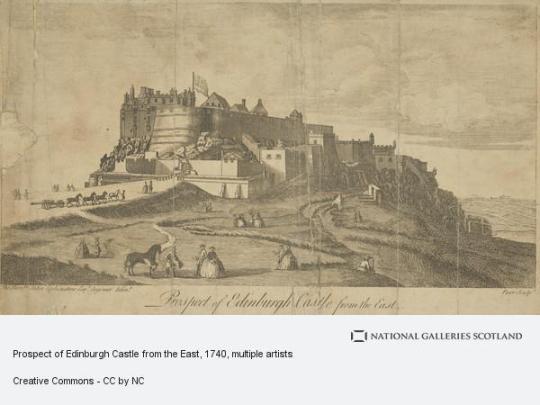

On Monday the 24th of December, 1716, Serjeant William Ainslie was executed.
Most executions in Edinburgh took place either at The Old Tollbooth, or the Grassmarket, some convicted of witchcraft were burnt on Castle Hill, or the Esplanade, as it is now. What is unusual about William Ainslie’s hanging was he was executed over the Castle-Wall.
Serjeant Ainslie was part of a plot in the Jacobite rising of 1715 to take control of Edinburgh Castle. Ainslie and two other soldiers of the garrison had been bribed to admit the plotters via a sally port.
Once there, the Highlanders meant to seize the castle’s ample stock of weapons and cash, and also “fire three cannon; that when this signal should be heard by some men stationed on the opposite coast of Fife, a fire should be kindled on the heights; and that these beacons, continued northward from hill to hill, should, with the speed of a telegraph, apprise Mar of his advantage.”
One minor problem: the whole enterprise depended on the ability of at least 83 people to keep a secret, but “they were so far from carrying on their affairs privately, that a gentleman who was not concerned told me that he was in a house that evening, where eighteen of them were drinking, and heard the hostess say that they were powdering their hair to go to the attack of the Castle!” Even so, the word only barely got out in time, the conspirators self-defeating by showing up late (too much time powdering?) and with ladders that were too short.
William Ainslie, the sergeant who was planning to open the gate for the Highlanders, had to shout the alarm and play it off that way once he realized that the dawdling had wasted the opportunity, but he was soon found out and spectacularly hanged over the castle wall for his trouble.
The inevitable hanging-ballad broadside (“The Lamentation, and Last Farewell, Of Serjeant William Ainslie, who was executed over the Castle-Wall of Edinburgh for High Treason and Treachery, on Monday the 24th of December, 1716”*) emphasizes the pecuniary motive at the expense of the patriotic, but maybe it should have been dedicated to the principle that loose lips sink ships.
Here’s a transcribe of the said Broadside;
Let all Bold Soldiers far and near,
That sees my dismal Fall,
Lament my sad and wretched End,
That’s brought my self in Thrall;
Here to the World I do declare,
The Castle to Betray.
Full Fifty Pounds I was to have,
for which I’m doom’d to Die.
My Name is William Ainslie,
A Serjeant Stout and Bold,
In Flanders I the French have Fought,
And would not be Control’d:
And Loyal was to King and Crown,
my Trust did ne’re Betray,
Till I was tempted with that Gold,
For which I’m Doom’d to Die.
While I did in the Castle ly,
In Irons close Confin’d
For my Dear Wife and Children all,
My Heart no Ease could find,
To GOD I did for Mercy cry,
As I in Fetters lay.
Both Night and Day to him I’le Pray,
Since I am Doom’d to Die.
Ah! wo be to that cursed Gold,
That did my Heart intice,
To act such a gross Treachery,
The Castle to Surprise;
But wo’s me, for my Treachery,
My Hour is drawing nigh.
For I most hang out o’re the Wall,
Most Just Deservedly.
Good People, pray do not revile,
My Wife and Children dear;
Whom I so dearly lov’d on Earth,
Lord to my Soul draw naer: [sic]
I hope in Mercy he’l appear,
For still to him I’ll cry;
Since I most Justly, am condemn’d,
Over the Wall to dy.
They told me a must hang some Days,
Over the Castle-Wall;
Until the Rope takes Fire and breaks,
Then to the Ground I fall:
But since that I must suffer here,
Unto the Lord, I’ll pray;
Take Warning by my shameful End,
I just deserve to dy.
Since many People here is come,
This Day to see me dy;
I hope their Prayers to God they’l send,
For me, before I dy:
My vital Breath will soon be gone,
With a strong Rope and Tree;
But yet I hope my Peace is made,
With God who lives on high.
Those that did cause my dismal End,
I do forgive them here;
For now my Life lyes at the Stake,
Oh! Lord, to me draw near:
My precious Soul I pray receive,
For unto Thee I’ll fly;
For I have acted Treason great,
And for it I must die.
I wish all People Warning take,
That’s come to see me die;
The World unto you I’ll leave,
For all Eternity:
I must away, farewel, adieu
My Wife and Children all;
For I must hang into the Air,
Over the Castle Wall.
All you that sees me here this Day,
I desire you all to pray;
That all my Sins God would forgive,
Since I am brough to die:
Let every one both far and near,
Take Warning now by me;
Your Trust, I pray, never betray,
For which you see me die.
16 notes
·
View notes
Note
Hey.
So I've hear you bringing up Rolemaster a lot on your blog but whenever I've tried looking it up in the past I've found very little information.
Could you kinda go over what the system is, how its different from other rpgs around and where to go to find the rules please?
Gotcha! I love talking about Rolemaster!
Rolemaster is a fantasy role-playing game that got its start as a booklet called Arms Law that purported to be a universally applicable combat system for all fantasy role-playing games. It had started out as a set of house rules the developers had used in their D&D game set in Middle-earth because they had found D&D's combat system too unrealistic and abstract for their tastes. Arms Law presented a combat system based around rolling 1d100 with various modifiers from skill, attributes, weapon enchantment, and so on, with the 1d100 roll being "open-ended," i.e. exploding on unmodified rolls of 96 to 100 meaning the tables could go very high, with attack results being cross-referenced against target armor type to find out the amount of damage and the severity and type of critical hit (if any) inflicted.
Character Law, or rules for creating characters (again, supposedly for all fantasy role-playing games but more like... For creating characters for use with Arms Law) followed in 1982 with the first full standalone edition of Rolemaster following in 1984. It very much follows the principles first set out in Arms Law: extremely detailed, lots of lookup tables, notably less abstract and supposedly more realistic than other fantasy RPGs. (I personally disagree on the realism point: Rolemaster is a silly game with funny tables and the tables are quite ridiculous.)
Ultimately it's very much a D&D style game: a semi-Tolkienistic fantasy action RPG where the focus is on combat and overcoming obstacles set by the GM. What sets it apart is that reliance on extremely detailed tables that often result in very unpredictable and surprising results. I've previously compared it to playing D&D where everyone has the Wild Magic Sorcerer's wild surge tables and those wild surges can be triggered by everything from attack rolls to skill checks. It's also quite math heavy, but a lot of the math is front-loaded into character creation and in play it's mostly rolling 1d100, adding modifiers, and looking up the result on an appropriate table.
Anyway, Rolemaster is still supported by Iron Crown Enterprises, but owing to the fact that I.C.E. went bankrupt at one point and the brand is maintained by a bunch of hobbyists their new output is understandably slow. The most recent version of Rolemaster is called Rolemaster Unified and it's being rolled out slowly. I.C.E.'s website has a pretty exhaustive introduction to Rolemaster as well as a system comparison page for the two other existing versions of Rolemaster, Rolemaster Classic and Rolemaster Fantasy Role-Playing. All of their output is available digitally on DriveThruRPG.
There's also a very good Rolemaster clone called Lightmaster, built on the d20 system SRD using the OGL, which rebuilds a different vision of Rolemaster 2e using a d20-based system. It's free and I highly recommend it to anyone who wants to look into the system for free. Another good online resource is this site I recently found which is an online resource for Rolemaster Standard System (the officially supported version from the 90s) which is sadly not complete but also a very good resource for finding out more about the system.
Hope that helps. Don't hesitate to ask if you'd like some more information. I love talking about this silly game. :)
18 notes
·
View notes